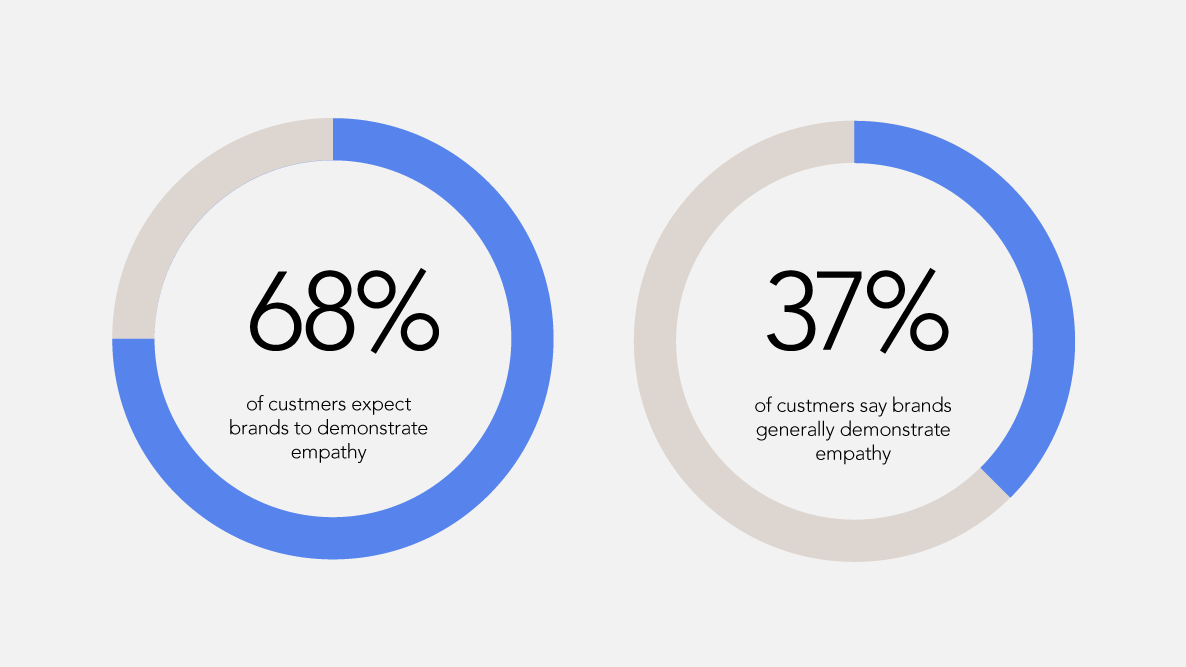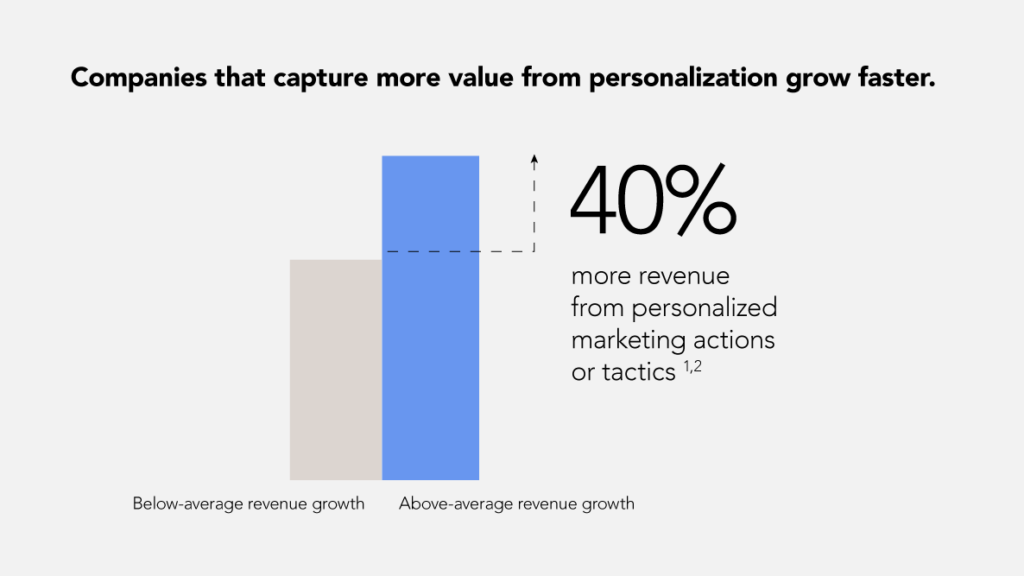Data is everywhere — true or fake, captivating or boring, irrelevant or essential. But people are time sensitive — they don’t want to waste their time on irrelevant news; they need to find what they want right now.
On the other hand, Media and Entertainment companies now have more access to this ever-expanding pool of data coming from a digitally connected consumer than ever. And with Covid, direct-to-consumer has only accelerated.
The competitive landscape has become fierce. The most significant piece of the puzzle that media and entertainment companies need to solve now is the accuracy of the information personalized to end-users. With the challenges of data volume, velocity, and fragmentation, media organizations need to understand their end-users better and get to the essence of what they look for to be able to deliver supreme customer experience.
How can media and entertainment companies unlock the value of this data?
To help answer these questions, we sat down with Mark Scrivener, Managing Director at Momentum Design Lab.
Personalized content is no longer nice to have – it’s an imperative
Customers no longer look for personalized content — they demand it. In fact, a Salesforce study discovered that 66% of customers expect companies to understand their unique needs.

Source: “State of the Connected Customer,” October 2020. (Salesforce)

“What media companies should try to do is get that first snippet of information over to someone which then takes them on that journey, but it has to be relevant to them. And the biggest problem here is trying to understand who that person you’re speaking to is”, says Mark. “Media companies need a granular understanding of their target personas, including many variables such as location, nationality, language, culture, religion, and education. And not just that. Media companies need to know not only what their audiences are consuming, but also where and when, and on what specific platform to deliver hyper-personalized experiences they are all craving for.” — Mark Scrivener, Managing Director at Momentum Design Lab
Media companies need to start appealing to people by giving them leads and hooks into what they want consumers to be reading or what they are sharing as a media piece of information.
“There’s a big shift away from media pushing information to the target audience to many people sharing their information. This is why Twitter, LinkedIn, and all those social media elements are coming to the front — it is all about creating your unique content. You are the expert. It’s all about who’s interested in what you have to say and how to make them engage with the subject matter“, explains Mark.
Mckinsey’s study reveals that companies that grow faster drive 40 percent more of their revenue from personalization than their slower-growing counterparts.

Source: McKinsey, “Next in Personalisation” study 2021
AIs Wide Open – Supercharging Customer Service with AI
How’d you condense all of this? How do you make it more personalized? Streamlined? How do you make it more appealing to people?
“This is where AI and machine learning come to the stage. AI algorithms can understand the persona, what people’s behavior and habits are, allowing them to cater to customers’ needs. AI and ML will be crucial to unlocking data’s full potential”, explains Mark.
We bring you a few ways how AI can help media companies personalize their content.
Real-Time Streaming
From personalization for viewers and creating appropriate thumbnail images to content production and video playback services, AI brings immense value to some of the best OTT platforms; the most famous is Netflix. A large majority of TV shows [and movies] people watch on Netflix are discovered through the platform’s recommendation system. As a matter of fact, everything that Netflix does is powered by intelligent AI and driven by data.
“One of the challenges that come in the way is that through personalized content, customers may start to be fed and led in a way where they don’t want to go. A typical example of the companies that use this capability to push the content on their agendas is Netflix. These efforts result in a huge following. Still, this huge following can create fake interest because users are just going with the flow like a flock of sheep”, explains Mark.
Predictive Analytics
New technologies like AI are providing insights — often in real time — about audiences, making personalization an easier task. According to Deloitte’s study, 73% of AI adopters believe AI is “very” or “critically” important to their business today, and 64% say AI technologies enable them to establish a lead over their competitors.
An example use case would be recommending a book based on what the customer is reading by filtering out what they are not reading, for instance. With so much information at their hands, media and entertainment companies could start creating different agendas that resonate with each customer separately.
“We created a political network, a social network for politics, just before Donald Trump was elected. This network was getting traction through US colleges. Its purpose was to allow users to understand what’s happening in the debate scene but keep it as neutral as possible, so they’re not swayed by one angle or the other. You don’t want to be left or right. There was clear messaging that it was a non-judgmental platform where you can say what you need to say. And there may be many different varying opinions. Many people who have time on their hands are creating a lot of the content, and AI and machine learning can understand who’s contributing, what’s their value in society, what’s their credit, or how they’re being judged“, says Mark, Scrivener, Managing Director at Momentum Design Lab.
The real challenge here is how to engage people with the right information, helpful information that does good for the world.
In the UX, there’s a concept called “jobs to be done,” which looks at personas from a different perspective. For instance, imagine a scenario where both an 80-year-old retired man and a 15-year-old schoolgirl are on the train picking up the newspaper to read something that caught their interest. This piece of content is not based on the type of persona. It’s based on what their job to be done is — what they’re trying to do.
“In that newspaper, there might be an article that appeals to both of those people, or they just picked the newspaper to pass their time. So, it’s all about understanding what the job to be done is. This is where AI can help — by understanding what the people’s jobs to be done are, media companies can create different versions of the content based on location, what’s in the news, or what’s trending at the moment. Sentiment analysis is years old technique“, explains Mark.
Generating data-specific content
Another great challenge for media is how to produce relevant “hot off the press” content continuously and keep people engaged. A lot of people spend a lot of time creating content that will be distributed and read, and then it’s lost within seconds.
“There’s a phrase in the UK about fish and chips — today’s news is tomorrow’s fish and chips paper, a reference to a wrapping paper because we used to wrap yesterday’s newspapers for the fish and chips the next day. AI and machine learning can help generate content, not so much brand-new content but repackaged pieces that are relevant at the moment. The trick, again, is having it relevant to what the current news is. But if you bring up previous content and use AI to refresh it and give it that modern term, that’s how we can tackle it for the people who want to be creating content that do not have time.” — Mark Scrivener, Managing Director at Momentum Design Lab.
What’s the next flavor? What’s your favorite color? What music do you like?
These are just a few questions machine-learning-powered surveys can ask millions of viewers, which media companies can use to come up with fresh new relevant topics and generate multiple pieces of content that will bring valuable information to that survey respondents.
But how do you then implement all of this into your product?
Learn to walk before you run, with technology
Although there is growing pressure to use personalization to engage more customers and get ahead of the competition, media and entertainment companies need to be cautious when investing in personalization tools.
Mark points out that “the number one barrier to AI adoption is the lack of education and training. For media and entertainment companies to be able to create personalized messages and experiences, they need to know the consumer on a personal level, gain intimate knowledge of customer journeys, produce valuable and relevant content that drives action, and leverage technology that helps deliver and measure experiences. Unlocking the customer data to enable personalized customer experience and build a business case takes time. AI can accelerate this innovation and bring immense value to media and entertainment companies looking to capitalize on new sources of revenue.”
So, what advice does Mark have for media and entertainment players who want to unlock impact?
“Create the frameworks manually, set out the guardrails, and then let the AI do all the heavy lifting work while your users train the system through their personalization choices over time.“
Want to learn how we can help you scale the impact of AI across your business. Talk to Mark Scrivener or reach out to our team of experts to find ways how you can create products that will provide your customers with superior experience.






